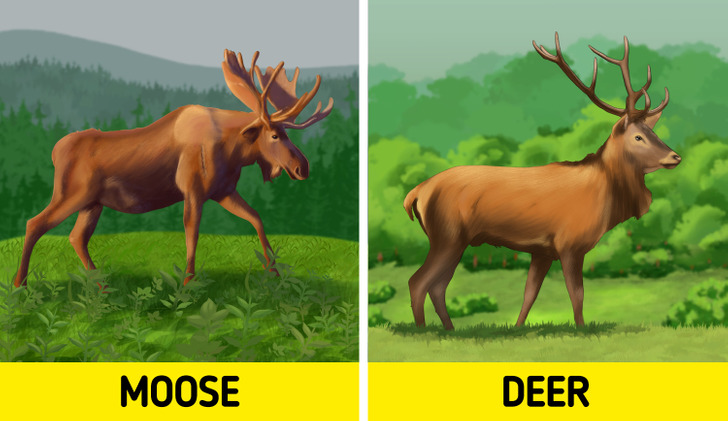How Moose Are Different From Deer
5-Minute Crafts is explaining what the differences between moose and deer are.
- Moose are the largest representatives of the deer family. Their height fluctuates between 4.6 feet and 6.9 feet at the shoulder, while their weight can vary from 600 lb to 1,500 lb. A deer of any type looks more petite. Their weight rarely exceeds 900 lb, while their height is anywhere between 2 feet and 4 feet at the shoulder.
- Moose antlers are wide, flat, and very massive. First, they widen horizontally, then they go upward. Deer antlers are thinner and spindly, and they go up straight out of their heads.
- Moose have bulky faces with a dewlap that hangs from their chin area. Deer have a thinner and more “accurate” snout without a dewlap.

- Moose are solitary animals. They spend time with their fellow moose only during mating season. At such moments, these animals form small herds, consisting of one male and several females. Deer are sociable animals, and most of the year they live in small herds. In winter, they often unite in large groups that can consist of several dozens of species.
- The habitat of deer is much wider than the habitat of moose. Different types of deer can be found almost all over the world, while moose live exclusively in the areas of North America, Europe, and some parts of Asia. They choose areas with seasonal snowfall, which help them protect themselves from predators in winter. In summer, moose move closer to water sources where the climate is milder and cooler.
- Thanks to their large size, moose have way fewer enemies among predators. Their main foes are wolves (who normally gather in packs for hunting moose) and sometimes bears. Being much smaller creatures, deer have more enemies. Depending on their habitat, they can be attacked by wolves, coyotes, bears, and even alligators.
Share This Article